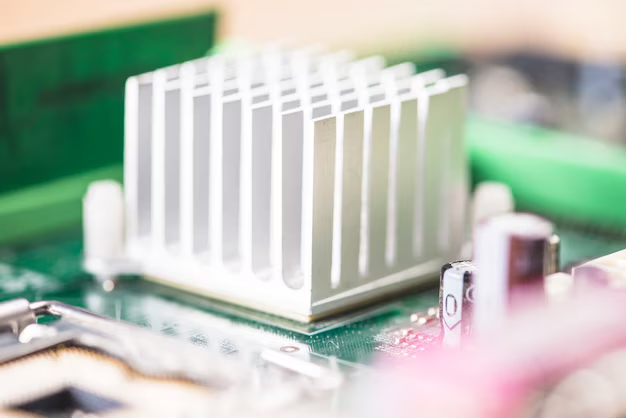How to Ensure Your Refrigerator Capacitor Is Working: A Step-by-Step Guide
Picture this: you’re about to grab a refreshing drink from the refrigerator, but you notice something is off. The lights are flickering, the coolness seems inconsistent, and there's a strange hum. Before you call in the costly repairs, consider investigating one of the most common culprits—the refrigerator capacitor. Testing this critical component not only saves time and money but also empowers you to better understand and maintain your appliance. Here, we'll explore how to test a refrigerator capacitor, covering everything from what it is, why it matters, and how you can safely assess its condition.
Understanding the Role of a Capacitor in Your Refrigerator
What Is a Capacitor?
Think of a capacitor as a small but mighty energy reservoir. Within your refrigerator, it plays a critical role in ensuring efficient motor startup and operation. Essentially, it stores electrical energy and releases it when needed to boost the compressor motor. Without a functional capacitor, your refrigerator might suffer from startup failures, strange noises, or inefficient cooling.
Why Test the Capacitor?
Testing the capacitor should be one of your first steps if you experience issues such as:
- 🌀 Inconsistent cooling or compressor failing to start
- 🔋 Unusual noises, like clicking or humming
- 🚫 Complete breakdown of the refrigerator
In many cases, a faulty capacitor is the root cause of these troubles, making it a worthwhile component to check.
Tools and Safety Precautions: Preparing for the Test
Essential Tools
Before testing, gather these essential tools:
- Multimeter (a digital device that measures electrical current)
- Insulated screwdriver
- Safety gloves and glasses
Safety First!
Working with electrical components requires caution:
- Unplug the Refrigerator: Ensure it’s disconnected from power to prevent electrical shock.
- Discharge the Capacitor: Use an insulated screwdriver to discharge stored energy by bridging the terminals.
- Use Insulated Tools: Protect yourself with insulated tools and wear safety gear.
Step-by-Step Guide: How to Test Your Refrigerator Capacitor
Locating the Capacitor
Within the refrigerator, capacitors are typically found near the compressor. You’ll need to access the back panel or, in some models, the lower front section.
Testing with a Multimeter
Set the Multimeter: Adjust it to the capacitance setting.
Check the Capacitance: Connect the multimeter leads to the capacitor terminals. Ensure you’re following the positive and negative markers accurately.
Read the Results:
- Compare the multimeter reading with the capacitance rating labeled on the capacitor.
- A reading too far off the rating signifies a faulty capacitor.
📝 Key Points to Remember
- Correct Multimeter Setting: Ensure you’re using the capacitance feature, not resistance or voltage.
- Safe Discharge: Never skip the capacitor discharge to avoid electrical shock.
- Cross-reference Readings: Match multimeter outcomes with the device ratings for clarity.
Common Issues and Solutions
Capacitor Doesn’t Charge
If a capacitor doesn’t charge:
- Reassess the multimeter setting.
- Recheck connections and ensure full discharge was achieved before testing again.
Unexpected Multimeter Values
Unexpected results can arise from:
- Battery Levels: Ensure the multimeter battery is charged.
- Loose Leads: Verify all connections are snug and secure.
The Capacitor is Faulty: Next Steps
In the event of a faulty capacitor:
- Replace promptly: Utilize the same type and capacitance rating to avoid compatibility issues.
- Retailers offer capacitors designed for your refrigerator model—consult the appliance manual or a trusted technician if in doubt.
Beyond Testing: Ensuring Refrigerator Longevity
Routine Maintenance Tips
- Regular Cleaning: Dust and grime can affect efficiency—clean coils regularly.
- Stable Temperature Settings: Avoid frequent changes that overwork the motor.
- Listen and Observe: Unusual sounds or operational changes signal it may be time for a check-up.
When to Call a Professional
Testing the capacitor is straightforward, but repair and replacement may require technical expertise. If you’re unsure or lack the right tools, seeking professional help is the safest option.
A Handy Summary of Testing Steps: 🌟
- 🔌 Unplug: Ensure safety by disconnecting the appliance.
- 👓 Wear Safety Gear: Don gloves and glasses.
- 🔧 Gather Tools: Multimeter and insulated screwdriver ready.
- 📍 Locate the Capacitor: Find it near the compressor.
- 📏 Set Multimeter: Adjust to capacitance reading.
- 💡 Test & Compare: Read results, compare with labeled ratings.
- ⚠️ Faulty? Replace ASAP: Match type and rating for best results.
Understanding how to test your refrigerator capacitor can significantly cut costs and add minds-ease during unexpected breakdowns. Taking preventive measures—armed with knowledge—is always a wise choice in maintaining your appliances. Whether you’re encountering current performance issues or preparing for potential future hiccups, these steps help ensure your refrigerator remains a reliable kitchen companion.
